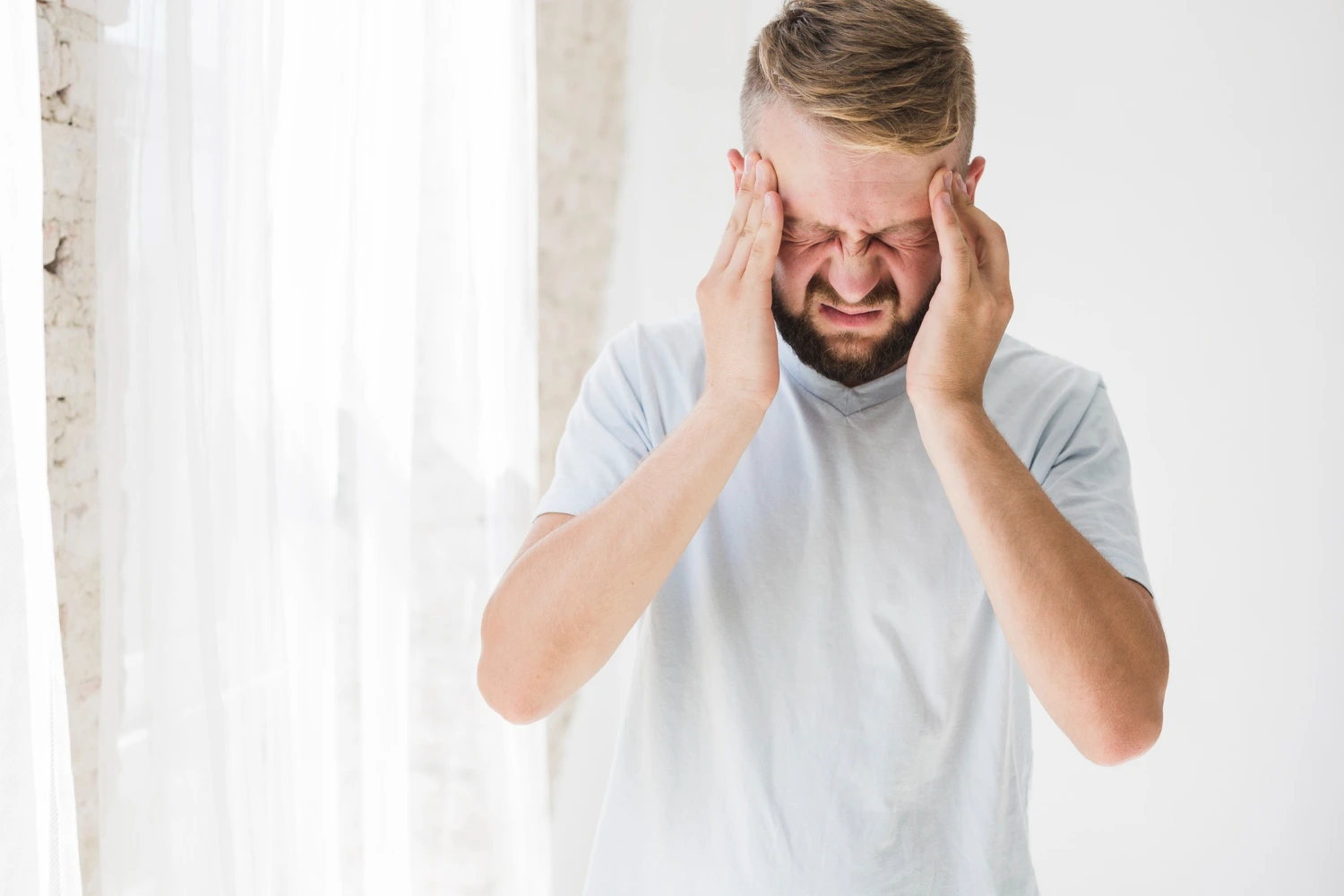Tennis elbow, medically known as lateral epicondylitis, is a common condition that affects the tendons on the outside of your elbow. Despite the name, you don’t have to be a tennis player to experience it. Recognizing the tennis elbow symptoms, its causes, and associated conditions can help you seek the right care before the issue worsens.
What Is Tennis Elbow (Lateral Epicondylitis)?
Tennis elbow is a type of elbow tendonitis that involves inflammation of the tendons that attach the forearm muscles to the lateral epicondyle of the elbow, the bony bump on the outside. These tendons are used in motions like gripping, lifting, and twisting, which explains why the condition often affects athletes and manual laborers.
Despite its name, tennis elbow is not limited to athletes. It affects people who engage in repetitive arm motions such as typing, painting, or using tools. Lateral epicondylitis develops in about 1-3% of people and mainly on the dominant arm. At the age of 40-50 years, the prevalence increases to 19%. [1]
Tennis Elbow Symptoms and Signs
One of the hallmark symptoms of tennis elbow is pain on the outside of the elbow, especially when performing activities that engage the forearm muscles. This pain tends to build up gradually, beginning as mild discomfort and worsening over time.
Also, you may notice tenderness at the lateral epicondyle, the point where the tendons insert into the bone.
Other signs of tennis elbow include:
- reduced grip strength
- difficulty lifting light objects
- tightness in the forearm muscles
- sensitivity to the touch of the affected area
Symptoms typically worsen during repetitive movements such as using tools, lifting groceries, or typing, and even when turning a door handle or shaking hands. [8]
What Does Tennis Elbow Feel Like?
Tennis elbow feels like a persistent ache that becomes sharp with activity. Many describe it as soreness or stiffness that gets worse when using the affected arm. Tendonitis elbow symptoms may also cause sensitivity when resting your elbow on a hard surface.
What Causes Tennis Elbow?
Tennis elbow causes are typically rooted in repetitive strain or overuse of the forearm extensor muscles, particularly the extensor carpi radialis brevis. This muscle helps stabilize the wrist when the elbow is straight, and frequent, forceful movements can result in microtears within the tendon.
Common contributing activities include:
- Racket sports (tennis, badminton, squash)
- Bowling, baseball, archery
- Rock climbing
- Manual labor, carpentry
- Typing
- Repetitive lifting (especially with poor technique)
These repetitive motions increase tension at the tendon insertion point, eventually causing breakdown of collagen fibers and initiating an inflammatory response. [9]
Acute trauma is rarely the direct cause [10], but repetitive overloading of the tendon without proper recovery often leads to elbow tendonitis. Over time, this results in persistent tennis elbow pain, even during low-stress movements.
What Can Be Mistaken for Tennis Elbow?
Several conditions share similar symptoms with lateral epicondylitis and may be misdiagnosed, especially without a thorough medical evaluation. Since pain on the outside of the elbow or general arm discomfort can originate from multiple sources, understanding the distinctions between conditions is key to getting proper treatment.
- Golfer’s Elbow: Though similar, these conditions differ in pain location. Tennis elbow pain occurs on the outside of the elbow, while golfer’s elbow causes discomfort on the inside. Golfer’s elbow affects the medial epicondyle and is also caused by repetitive wrist and forearm motions. [2] Lateral epicondylitis (tennis player’s elbow) is 7 times more common than golfer’s elbow. [1]
- Bursitis: Elbow bursitis affects the bursa, a fluid-filled sac that cushions the joint, rather than the tendons. Symptoms often include swelling at the back of the elbow and less focal pain. Unlike tennis elbow, bursitis might be visible as a lump. [3]
- Arthritis: Elbow arthritis involves the degradation of joint cartilage. Symptoms include stiffness, deep aching, and grinding sounds, contrasting the localized, activity-induced tennis elbow pain. [4]
- Cubital Tunnel Syndrome: Cubital tunnel syndrome results from ulnar nerve compression near the elbow. This causes tingling in the ring and little fingers and pain on the inside of the elbow, unlike the outside elbow pain typical of tennis elbow (lateral epicondylitis). [5]
- Radial Tunnel Syndrome: Both conditions involve outside elbow pain, but radial tunnel syndrome is due to nerve compression, not tendon damage. The pain is usually deeper and more diffuse than tennis elbow symptoms. [6]
- Ulnar Tunnel Syndrome: Often confused with cubital tunnel syndrome, ulnar tunnel syndrome occurs at the wrist. It causes numbness in the hand, not the elbow tendonitis symptoms associated with tennis elbow. [7]
When to Seek Medical Attention for Tennis Elbow
If you experience elbow pain that persists for more than a week or worsens despite rest, it’s time to see a specialist. Red flags include:
- Inability to grip or lift objects
- Swelling or warmth over the elbow
- Numbness or tingling in the arm
Early intervention prevents worsening symptoms and long-term damage.
Risk Factors for Tennis Elbow
Several groups are more likely to develop elbow tendonitis. The condition is most common in adults between the ages of 35 and 50 [11], but it can affect younger or older individuals depending on activity levels. Some studies show that women are slightly more likely to suffer than men, although this is still a topic of research and debate. [12]
Occupational and recreational activities that involve repetitive arm motions, such as plumbing, typing, weightlifting, or racquet sports, increase susceptibility.
Poor biomechanics, insufficient muscle conditioning, and improper equipment (e.g., using a racket with too tight a string) further elevate the risk. People experiencing a sudden increase in activity level without adequate preparation may also be prone to developing tennis elbow symptoms. [13]
Why Do I Suddenly Have Tennis Elbow?
You might not notice tendon damage until pain sets in. Sudden onset often follows a new activity, a change in workout intensity, or repetitive strain without sufficient rest. Outside elbow pain can arise after hours of desk work or a weekend of home improvement projects.
Can You Just Ignore Tennis Elbow? Complications of Inaction
Ignoring signs of tennis elbow may result in chronic pain, weakness, and reduced range of motion. In advanced cases, the damage can require surgical intervention.
Delaying treatment also increases the chance of compensatory injuries in the shoulder or wrist. Addressing tennis elbow symptoms early with rest, activity modification, and neuromuscular therapy can lead to full recovery within weeks or months. [14] If you’re experiencing persistent elbow discomfort or have noticed symptoms that interfere with your grip, it’s time to take action. Contact Moore MyoWorx to schedule a professional evaluation and get personalized care for long-term elbow health.
References
- National Library of Medicine: “Tennis elbow: A clinical review article”.
- Canadian Chiropractic Association: “6 ways to manage tennis elbow and golfer’s elbow”.
- Warner Orthopedics & Wellness: “The Difference Between Tennis Elbow And Bursitis”.
- Arthritis Foundation: “When Elbow Pain May Mean Arthritis”.
- Johns Hopkins Medicine: “Cubital Tunnel Syndrome”.
- Exception MD: “The symptoms of a radial tunnel syndrome”.
- Orthoinfo: “Ulnar Tunnel Syndrome of the Wrist”.
- Medical News Today: “All you need to know about tennis elbow”.
- National Library of Medicine: “Lateral Epicondylitis (Tennis Elbow)”.
- Physiotherapie Universelle: “Lateral Epicondylitis (Tennis Elbow)”.
- Physiopedia: “Lateral Epicondylitis”.
- National Library of Medicine: “Factors Associated With Lateral Epicondylitis of the Elbow”.
- Orthoinfo: “Tennis Elbow (Lateral Epicondylitis)”.
- The Orthopaedic Center: “Major Risks of Ignoring Tennis Elbow Symptoms”.




